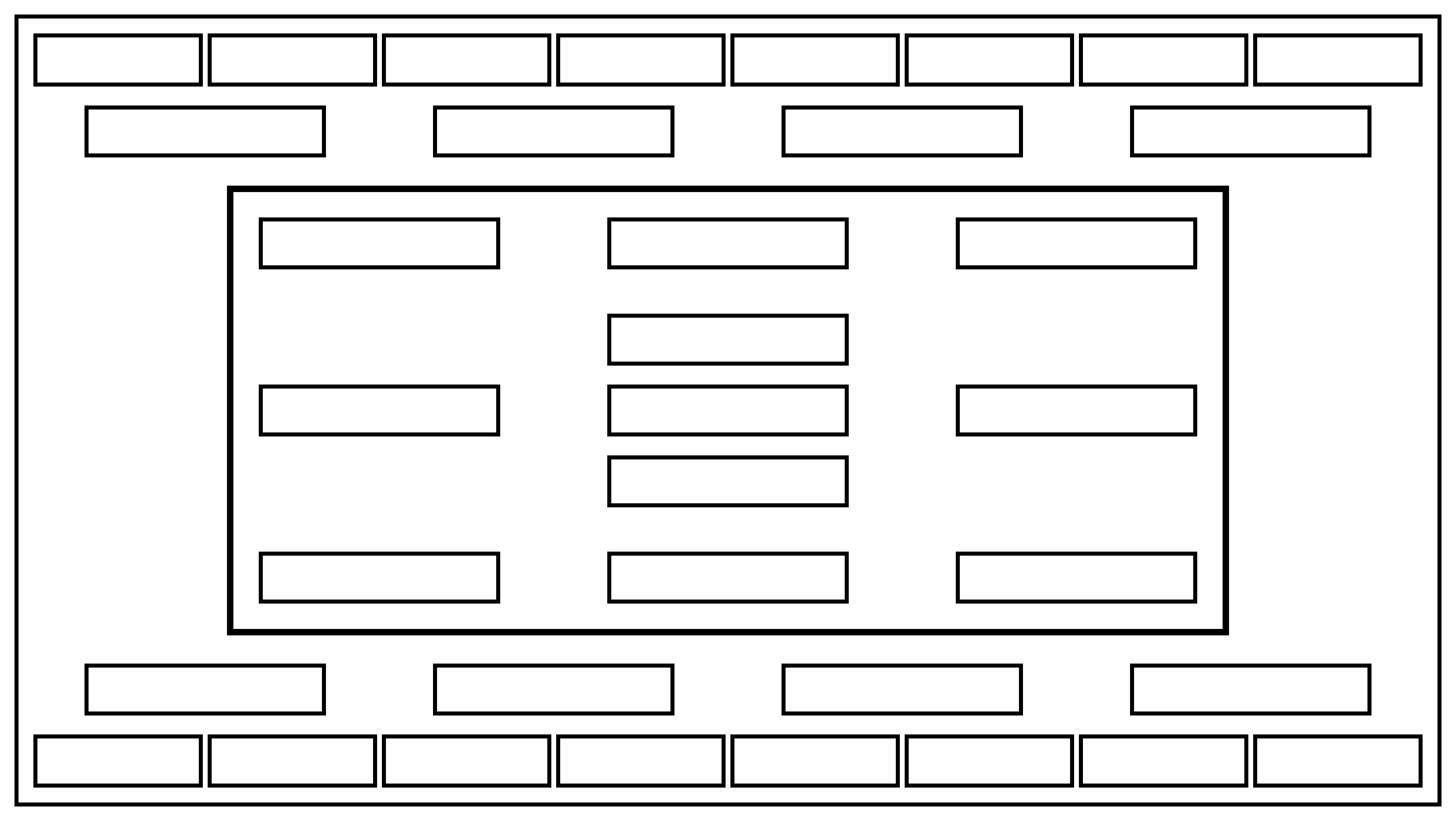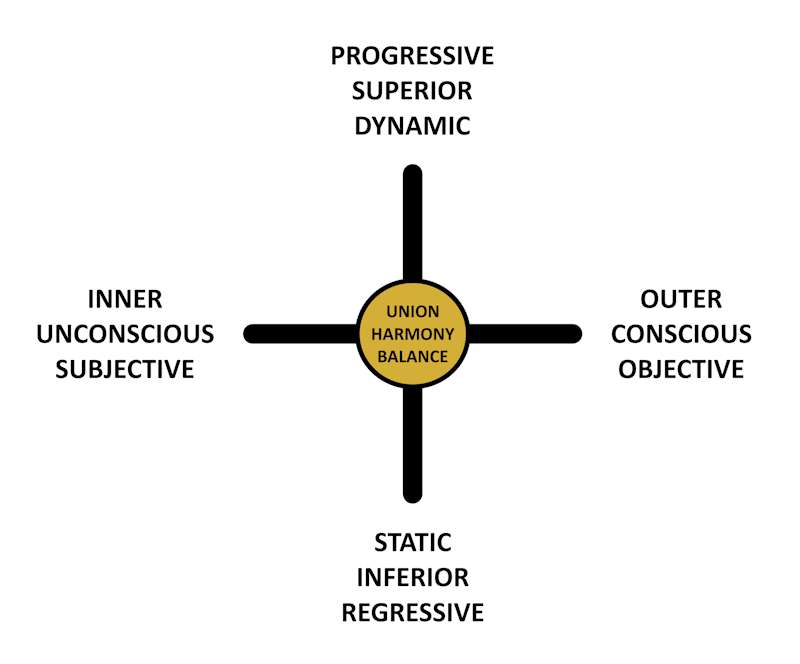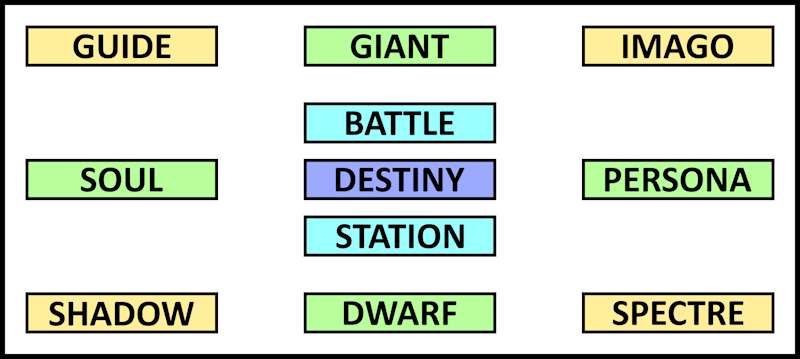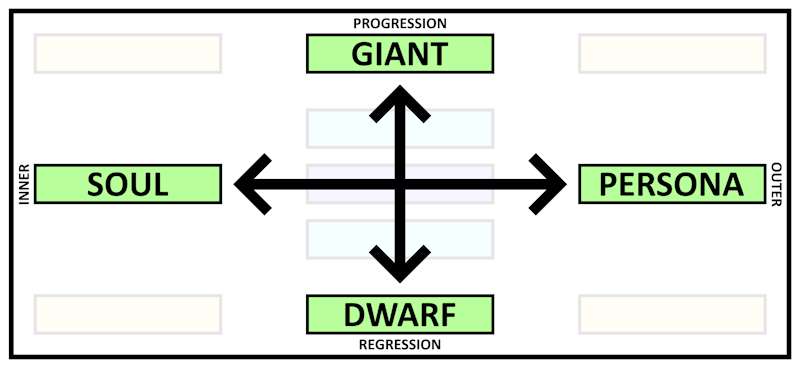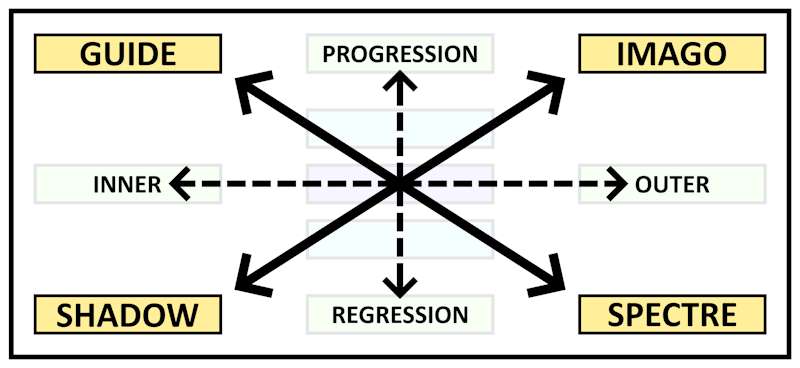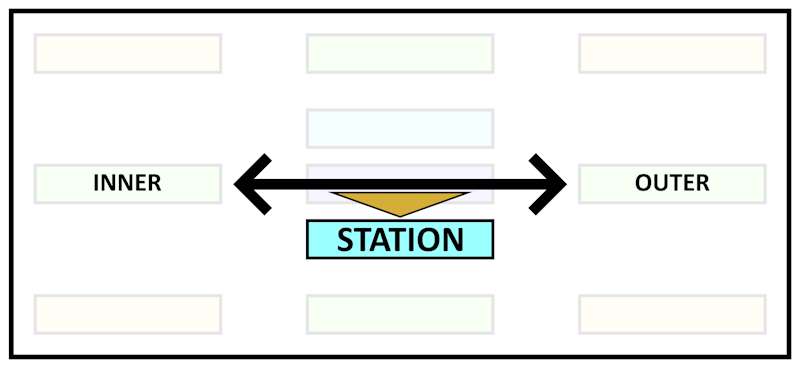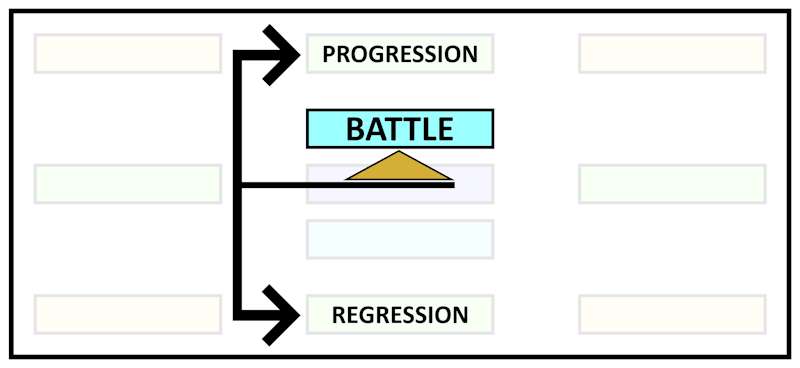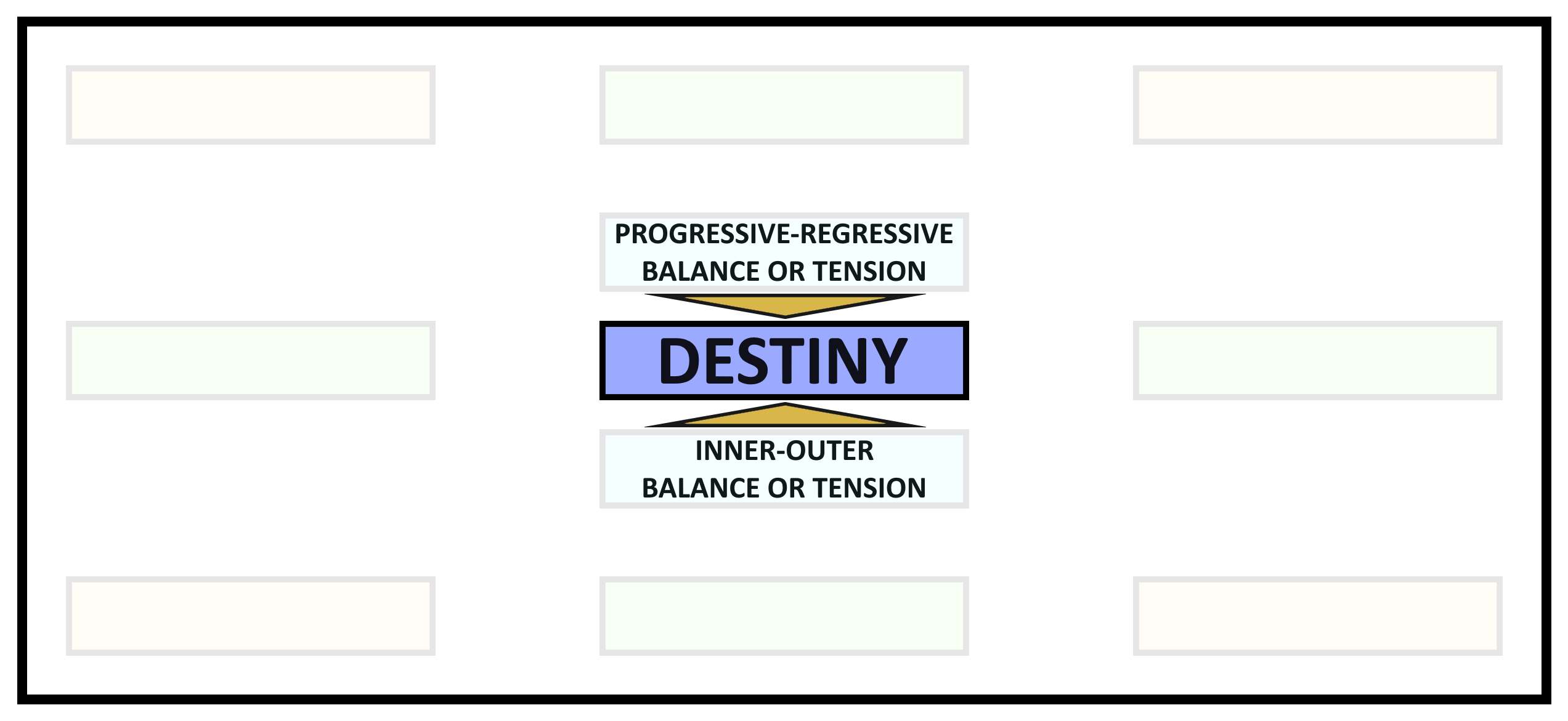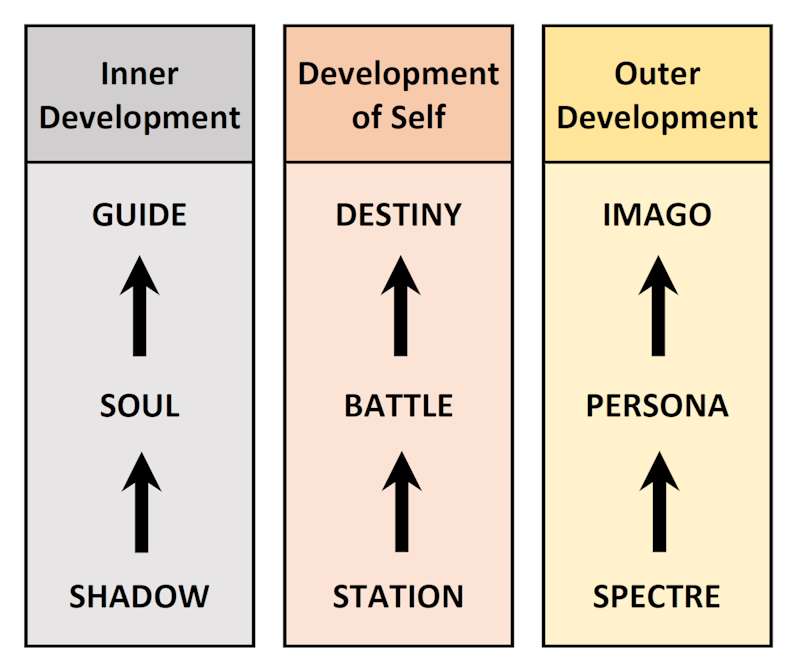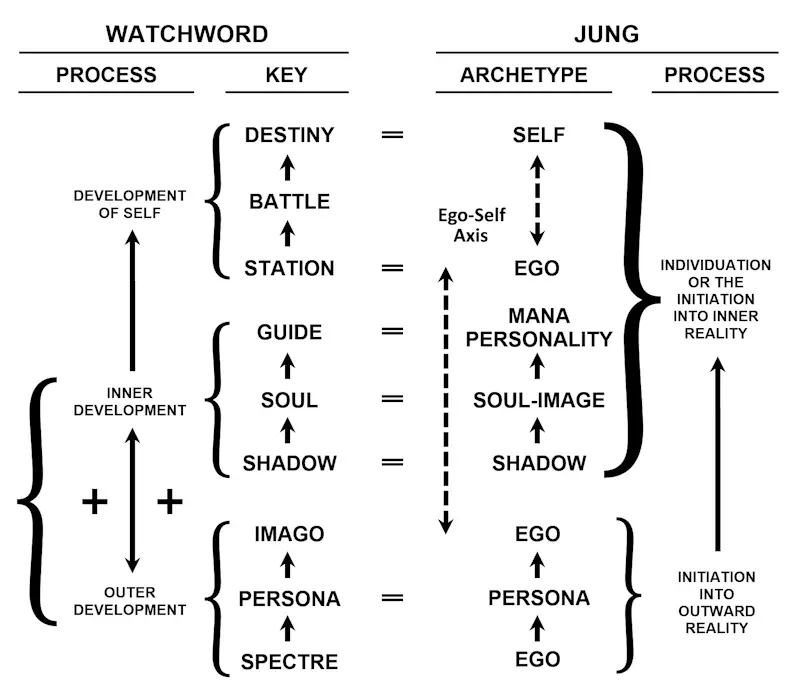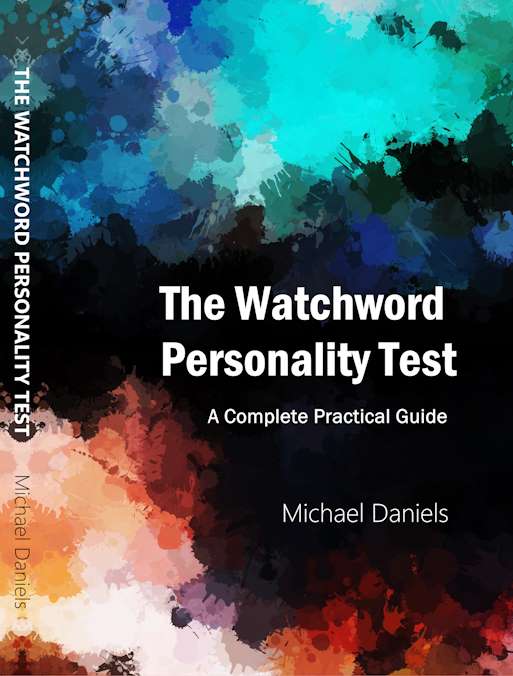Psychological Dynamics in the Watchword Test
Structural Principles
Like a typical Indian mandala, the Watchword matrix takes the form of a square (or circle), symbolizing wholeness, in which there is special emphasis on the central area, representing union and the balance of opposites. [Note 1]
The Watchword Test Form
In addition to the relationship between a centre and its circumference, Watchword’s interpretive structure utilizes a broader analysis of spatial metaphor.
Put simply, this means that space (more particularly, position and direction) has important, psychologically meaningful, symbolic associations.
The Four Primary Directions and the Greek Cross
Like many mandala symbols, the Watchword matrix is based upon the principle of four, represented by the four primary directions in which an object may move on a two-dimensional surface – i.e., forward (or upward), backward (or downward), left and right.
These directions can be represented by the equal-armed Greek Cross, made with a single vertical and horizontal line. The Greek Cross is widely believed to symbolize the radiation of the cosmos from a central point. Since this cosmos may be interpreted not only physically but also psychologically, the Greek cross can also symbolize the radiation of the psyche from the centre of consciousness and personal being.
In the Watchword system, the vertical line of the Greek cross, cut in two by the horizontal, signifies the distinction between psychological tendencies that are (1) progressive, superior, or dynamic and those that are (2) regressive, inferior, or static.
The horizontal line divides the left and right 'hands' of personal being. The left hand signifies the subjective, unconscious inner world, whereas the right hand represents objectivity, consciousness and the outer world.
Yet the cross is much more than a symbol of division. More fundamentally it carries the promise of balance, of union, and the conjunction of opposites. As such, the Greek Crpss is a major symbol of self-realization or individuation. [Note 2]
The Cross of Self-Realization
Psychological Dimensions and the Watchword Keys
When interpreting psychological dynamics from the Watchword Test, usually only the eleven central 'Key' words are considered. To aid discussion and interpretation, these Watchword Keys are given descriptive names, as shown below.
The Watchword Keys
Each of these Keys represents a specific psychological tendency (or archetype), based upon the significance of its location within the form.
The Principal Dimensions
The four primary directions (two principal dimensions) are represented by the Greek Cross formed by Giant-Dwarf and Soul-Persona.
The Principal Dimensions
The four corner keys indicate the various combinations of these two main dimensions. Thus Guide is the principle of inner progression, Imago is outer progression, Shadow is inner regression, and Spectre is outer regression.
The Corner Combinations
In completing the test, the three central Keys represent critical points of balance or tension between opposing forces in the psyche:
Station represents the balance or tension between the inner and outer tendencies of Soul and Persona.
The Balance of Inner and Outer
Battle represents the balance or tension between the progressive and regressive tendencies of Giant and Dwarf.
The Balance of Progression and Regression
Destiny represents a final resolution. Specifically it is the balance or tension between the static form of Station and the dynamic force of Battle.
The Final Resolution
Key Principles and Indications
The following table summarises the archetypal principles and primary psychological indications of the Watchword Keys.
KEY PRINCIPLE INDICATION GIANT Progression Driving forces DWARF Regression Inertial tendencies SOUL Inwardness Basic inner personality PERSONA Outwardness Basic Outer personality GUIDE Inner progression Higher self IMAGO Outer progression Ego-ideals SHADOW Inner regression Repressed material SPECTRE Outer regression Problems, anxieties and fears STATION Inner-outer balance or tension Sense of basic selfhood BATTLE Progressive-regressive balance or tension Personal task, quest or adventure DESTINY Final resolution Realized Self
Developmental Relationships
The Watchword Keys can also be used to identify three major developmental processes.These are (1) Outer Development, (2) Inner Development, and (3) Development of Self.
The Three Developmental Relationships
Outer Development
Outer development refers to those processes that lead the person to success, happiness and fulfilment in the material or social worlds.
Development generally starts from a position of weakness, alienation, anxiety or difficulty (Spectre). Through the achievement of a stable outer personality, and by adopting appropriate social roles (Persona), the individual may eventually approach his or her consciously realized goals (Imago).
Inner Development
Inner development is represented by the sequence Shadow – Soul – Guide. This sequence involves a journey towards deeper knowledge of the inner workings of the psyche.
Significantly, the sequence implied in the Watchword matrix is identical with that suggested by Jung in his outline of the process of individuation (see Jungian Dynamics). Thus Jung argues that individuation involves successive stages or milestones of development in which the person encounters archetypal images/structures of (a) the shadow, (b) the soul image and (c) the mana personality.
According to Jung these three stages of development must precede the final realization of the archetype of the Self.
Development of Self
The achievement in some measure of both outer and inner development paves the way for the development of the Self, represented in the Watchword Matrix by the sequence Station – Battle – Destiny.
Station indicates our personal axis, our fixed centre, or sense of who we are at this particular time and place. As such, it is more or less equivalent to the Jungian ego.
Station is, however, not our final destination. Rather it is the starting point for the our journey along the path towards full self-realization. This journey almost always takes place against a backdrop of conflict and opposition (represented by Battle).
The anticipated final destination and resolution of our personal battle or quest is represented by Destiny. Interestingly, very often the word written at Destiny represents a quality associated with the realized Self.
Comparison of Watchword and Jung
There are remarkable correspondences between the Watchword and Jungian models of the psyche and psychological development, with many of the Jungian archetypes having direct parallels with particular Watchword Keys.
The developmental processes indicated by the two models are also very similar, although Watchword implies that aspects of outer and inner development occur simultaneously, rather than occurring at different stages of life.This reflects the fact that the Watchword Test provides a snapshot of the forces and processes that are currently active in the psyche, rather than a longer-term analysis.
In practice, this means that Watchword's psychological diagnosis can be expected to alter over time, or whenever a sudden change occurs in your situation. Sometimes it is possible to track meaningful day-to-day changes, although generally the Watchword Test provides fairly consistent results over periods of weeks or months.
Comparison of the Watchword and Jungian Models
Notes
1. The Indian mandalas generally present a plan view of the cosmos (i.e., as seen from above). The Watchword Matrix, on the other hand, is an elevation view (i.e., as seen from the side).
2. The basis for these symbolic association are explored in Daniels (2023). The Watchword Personality Test: A Complete Practical Guide.

